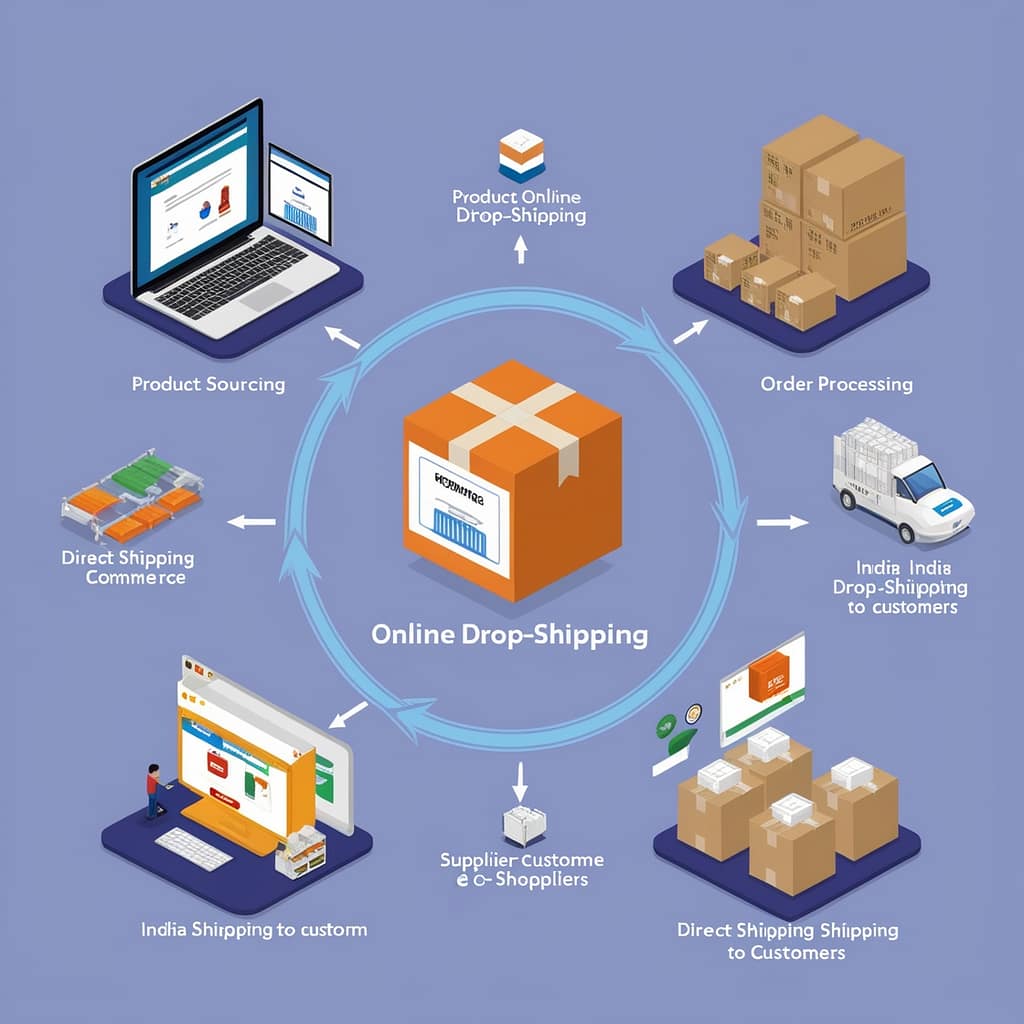
Introduction
Scaling an e-commerce business is an exciting step that signifies growth and new opportunities. However, moving from a small to a larger-scale operation is no simple feat—it requires thoughtful strategy, a deep understanding of customer needs, and often a robust infrastructure. In this guide, we’ll explore proven strategies to scale your e-commerce business successfully, helping you take the next steps with confidence.
Table of Contents
Why Scaling Matters in E-Commerce
What Scaling Means in E-Commerce
In e-commerce, scaling means expanding operations to handle an increase in sales volume and customer demand without compromising on quality, customer satisfaction, or profitability. Scaling successfully involves building processes and structures that support growth without excessive cost increases.
Signs Your E-Commerce Business Is Ready to Scale
Before you dive into scaling, ensure your business is ready. Common indicators include:
- Consistent profit growth: You’re seeing a steady increase in revenue.
- Product-market fit: Customers are consistently buying your product, and demand is strong.
- Operational stability: You have reliable processes in place for order fulfillment, customer service, and marketing.
Benefits of Scaling
Scaling offers many advantages, from increased market reach to improved profitability through economies of scale. It allows you to expand your brand presence, attract new customers, and boost revenue, positioning your business for long-term success.
Foundations of a Scalable E-Commerce Business
Optimizing Your Product Inventory
A successful e-commerce business relies on having the right products available at the right time. Start by analyzing which products are most popular and maintaining adequate stock levels to avoid missed sales opportunities. Consider integrating inventory management software to automate stock tracking.
Strengthening Your Supply Chain
Your supply chain’s strength determines your ability to fulfill orders quickly and efficiently. Work with reliable suppliers and consider backup options for key products. Establish clear processes with suppliers to prevent delays, especially during peak seasons.
Setting Up Scalable Customer Service
As you grow, so will customer inquiries and support needs. Consider chatbots and automation tools to handle frequently asked questions and basic inquiries, freeing your team to focus on more complex issues. Providing quality customer service ensures positive experiences and can foster customer loyalty.
Building a Strong Marketing Strategy for Growth
Developing a Data-Driven Marketing Approach
A data-driven approach is key to scaling effectively. Use analytics tools to track customer behavior, campaign performance, and conversion rates. Regularly review this data to refine your marketing efforts and target the right audience more precisely.
Expanding Digital Marketing Channels
To reach more potential customers, diversify your digital marketing efforts:
- Social Media Marketing: Build a strong presence on platforms where your target audience is most active.
- Email Marketing: Keep customers engaged with personalized offers and updates.
- Pay-Per-Click (PPC) Advertising: Use targeted ads to attract high-intent customers.
- Content Marketing: Blog posts, guides, and product videos can boost SEO and provide value to potential customers.
Leveraging Influencer and Affiliate Marketing
Influencers and affiliates can introduce your products to new audiences. Research influencers whose followers align with your customer base and establish partnerships for product promotions, or set up an affiliate program to incentivize others to promote your products.
Upgrading Your Technology and Infrastructure
Choosing the Right E-Commerce Platform
An efficient, scalable platform is essential for growth. Look for a platform that can handle increased traffic and provide seamless user experiences. Options like Shopify Plus, BigCommerce, or WooCommerce are popular choices for scaling.
Investing in Automation Tools
Automation streamlines repetitive tasks, freeing time for strategic initiatives. Consider automating processes like order management, email marketing, and inventory tracking. Automation reduces manual errors and allows for more accurate operations.
Implementing a Robust Data Analytics System
Investing in a robust analytics platform helps you gain insights into customer behavior, website performance, and marketing ROI. Tools like Google Analytics, Tableau, or business intelligence platforms help you make data-informed decisions as you scale.
Hiring and Training for a Growing Business
Knowing When to Hire New Talent
Scaling requires a strong team. Identify key roles you’ll need to expand, whether in marketing, customer service, or logistics. Hiring at the right time ensures you’re prepared for increased demands without overextending resources.
Effective Onboarding and Training Programs
Efficient onboarding is crucial to getting new employees up to speed. Create clear training programs, provide tools and resources, and establish mentorships. A strong onboarding process reduces turnover and boosts productivity.
Building a Scalable Team Structure
As your team grows, so should your organizational structure. Define roles and responsibilities to avoid confusion. A structured hierarchy with clear communication channels ensures a cohesive, efficient team.
Improving Customer Retention Strategies
Developing Loyalty Programs
Customer loyalty programs encourage repeat purchases and increase customer lifetime value. Offer rewards like discounts, exclusive offers, or points that customers can redeem. Loyalty programs create an incentive for customers to return.
Personalizing the Customer Experience
Personalization goes beyond addressing customers by name. Use data to offer product recommendations based on past purchases or preferences. Personalization helps build a more connected, loyal customer base.
Gathering and Using Customer Feedback
Listen to your customers’ needs and preferences by regularly gathering feedback through surveys or reviews. Adjusting based on feedback builds trust and shows customers you value their opinions.
Scaling Financially and Managing Cash Flow
Managing Cash Flow for Growth
Maintaining cash flow is essential for scaling. Project your cash needs, keep track of expenses, and ensure you have the funds to invest in growth initiatives like new hires or expanded inventory.
Identifying Funding Sources for Expansion
Scaling may require extra capital. Explore funding options like loans, venture capital, or angel investors to support your growth plans. Choose a source that aligns with your long-term goals.
Setting Up Financial Forecasting and Budgeting
Financial forecasting helps you anticipate expenses and revenue. Regularly update your budget to reflect growth changes, ensuring you’re financially prepared to scale without overextending.
Risks and Challenges of Scaling an E-Commerce Business
Common Risks and How to Mitigate Them
Growth brings risks like supply chain disruptions, increased competition, and higher operational costs. Identify potential risks and have a contingency plan in place to navigate challenges smoothly.
Scaling at a Sustainable Pace
Scaling too quickly can lead to burnout and poor customer experiences. Pace your growth, focusing on quality over quantity. Sustainable scaling prioritizes long-term success over short-term gains.
Conclusion
Scaling an e-commerce business is a rewarding yet challenging journey that requires a blend of strategic planning, effective resource management, and customer-centric initiatives. By focusing on solid infrastructure, efficient processes, and data-driven decisions, you’ll be well-prepared to grow successfully. Embrace the opportunity and navigate each step with a balanced approach for sustained success.
FAQs
1. What’s the best way to know if my e-commerce business is ready to scale?
Check for consistent growth, demand for your product, and operational stability. These signs suggest you’re prepared to scale.
2. What are the most effective marketing strategies for scaling?
A mix of social media, content marketing, influencer partnerships, and email marketing works well for most businesses.
3. How can automation help in scaling my e-commerce business?
Automation streamlines repetitive tasks, reduces errors, and allows for efficient handling of larger volumes of orders and customer inquiries.
4. Is it better to hire internally or outsource while scaling?
It depends on your needs. Hiring offers more control, while outsourcing can be cost-effective for specialized tasks.
5. What’s a common mistake businesses make when scaling?
Expanding too quickly without proper infrastructure in place is a common pitfall. Grow sustainably by balancing demand and resources.
You Might Also Like These Posts
- 100% Effective Strategies to Retain E-Commerce Customers
- Affiliate Marketing for Beginners: Make Money with 0 Inventory – Free Guide and Explanation
- Top 5 Apps to Build Customer Loyalty in E-Commerce: Effective Email Marketing Tips You Need to Know!


